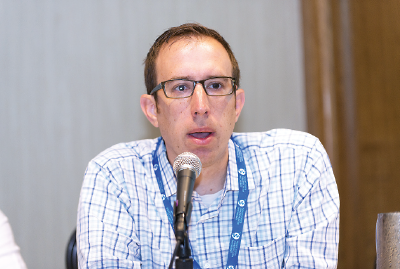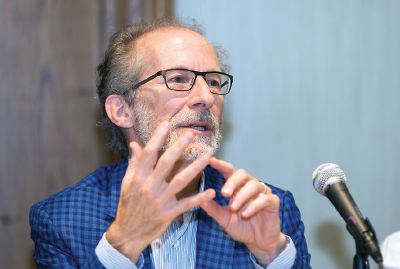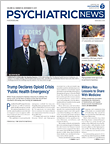System innovation and technology can be psychiatry’s friend by improving practice efficiency and quality of care—but only if psychiatry has a voice in how new technologies are developed and deployed.
That’s what John Santopietro, M.D., and John Torous, M.D., chair and co-chair, respectively, of the APA Work Group on Access and Innovation, wrote in a report presented to the APA Board of Trustees last month.
“We are at a Blockbuster moment,” Santopietro said in reference to the video chain store of the 1990s and early 2000s that was made obsolete by digital-streaming technology for movies and television shows. “Access to care and the delivery of care will be shaped in the future by technological and other innovations. How will we respond? If we can pivot in this Blockbuster moment, we as a profession can make ourselves indispensable in the process of systems change and innovation.”
Citing the fact that psychiatry, among all medical specialties, has been the slowest to adopt electronic health records, Santopietro said a fundamental task of the work group is to engage the wider APA membership in innovation.
“We need to get psychiatrists excited about technological and systems change, which is inevitable and urgent,” Santopietro said. He said three subgroups have been formed within the Work Group on Access and Innovation to focus on systems innovations, technological innovations, and new business models.
Santopietro was joined at the Board meeting by work group co-chair Torous, who is also a member of APA’s Committee on Mental Health Information and Technology. Torous said the work group and the new subgroups are focused on the “three pillars” of innovation and change: how to introduce new concepts, the technology necessary to make new concepts possible, and business models in which those innovations can thrive and grow.
Torous has emphasized that the arena of emerging mental health technologies—for instance, smartphone apps that could report symptoms and changes in mood to clinicians in real time—is still akin to the “wild, wild West.” Quality is variable and careful thought and consideration are necessary to ensure that technologies conform to the values and ethics of psychiatry, especially protection of patient privacy and confidentiality.
“Technology can make psychiatrists and other physicians happy and more efficient, but if we are not at the table to shape how new technologies are developed and used, it can go the other way,” Torous told the Board.
APA President Anita Everett, M.D., has made innovation one of the priorities of her presidency. Another is physician wellness and burnout.
“Our work group on innovation and technology is helping APA think strategically about how to make emerging innovations in health care systems and new technologies work for psychiatrists and our patients, not against us,” said Everett after the meeting. “As Drs. Santopietro and Torous told our Board, psychiatry and the larger field of medicine are really at a transformative moment, so the work they and their colleagues are doing is going to be crucial.”
Also reporting to the Board was Richard Summers, M.D., chair of the Work Group on Physician Wellness and Burnout.
Summers told the Board that the online “Well-Being and Assessment” tool, enabling members to track their own wellness, would be rolled out to the membership at about the time this issue of Psychiatric News went to press. A “Wellness Ambassador” toolkit provides tools for psychiatrists to communicate their expertise on issues related to burnout and mental illness to other physicians and health care professionals.
Summers said an important focus of the group is on how systems of care contribute to physician discontent and burnout, so the efforts of the work group on innovation complement the work on burnout. He said research literature on burnout strongly suggests the importance of system-related factors—administrative burdens, cumbersome or inefficient electronic medical records, and constraints on time spent with patients, among other issues.
Ultimately, Summers said, the so-called “Triple Aim” of health care—improving the patient experience of care, improving the health of populations, and reducing the per capita cost of health care—should be expanded to include a fourth aim: improving physician well-being.
APA CEO and Medical Director Saul Levin, M.D., M.P.A., said the work groups on innovation and physician wellness and burnout have a synergistic relationship. “If we as an organization are proactive and work to influence the direction of technological innovation and system redesign, these changes can make physicians’ professional lives easier and more efficient while widening access and improving quality of care,” Levin said. ■


